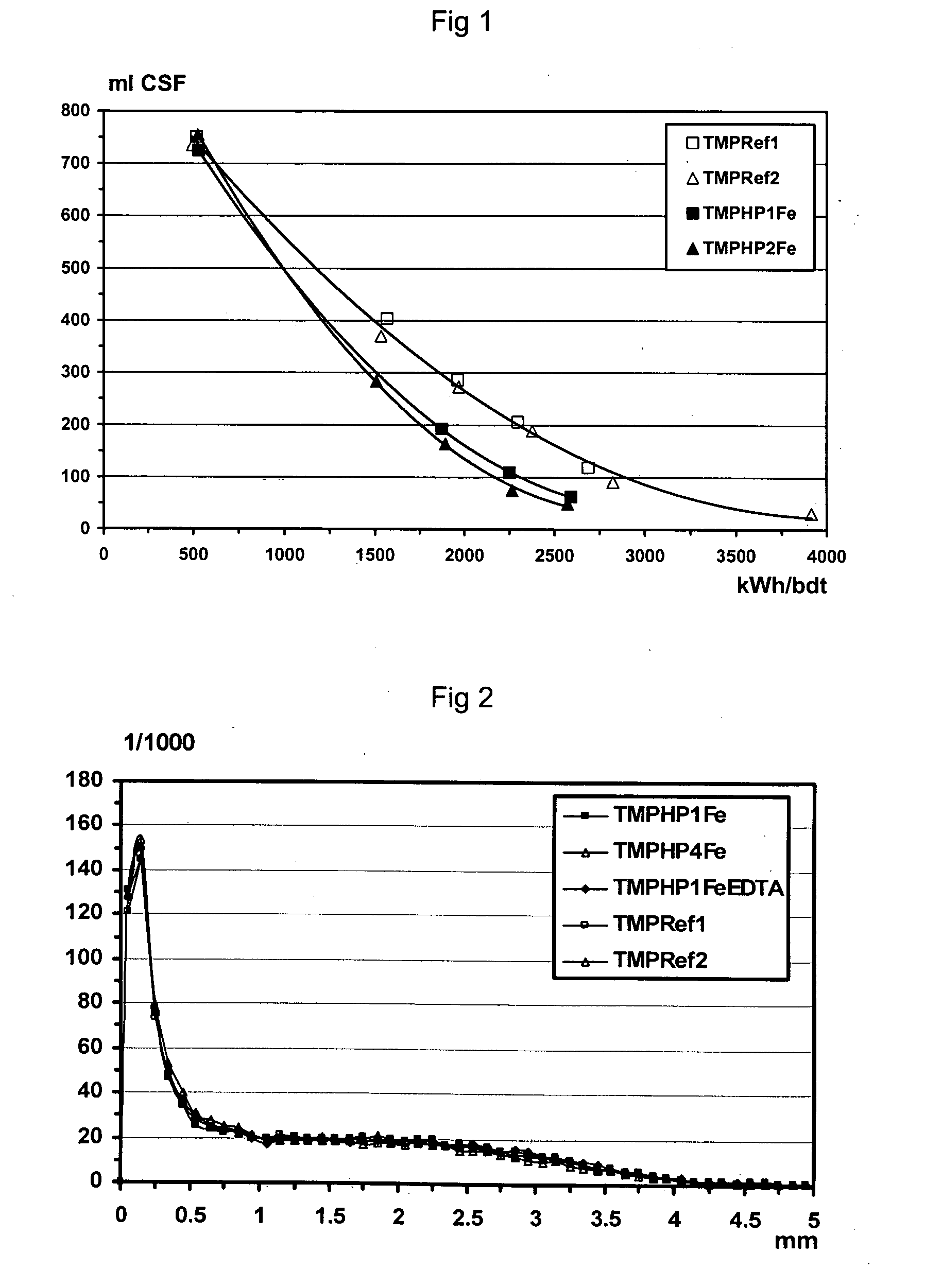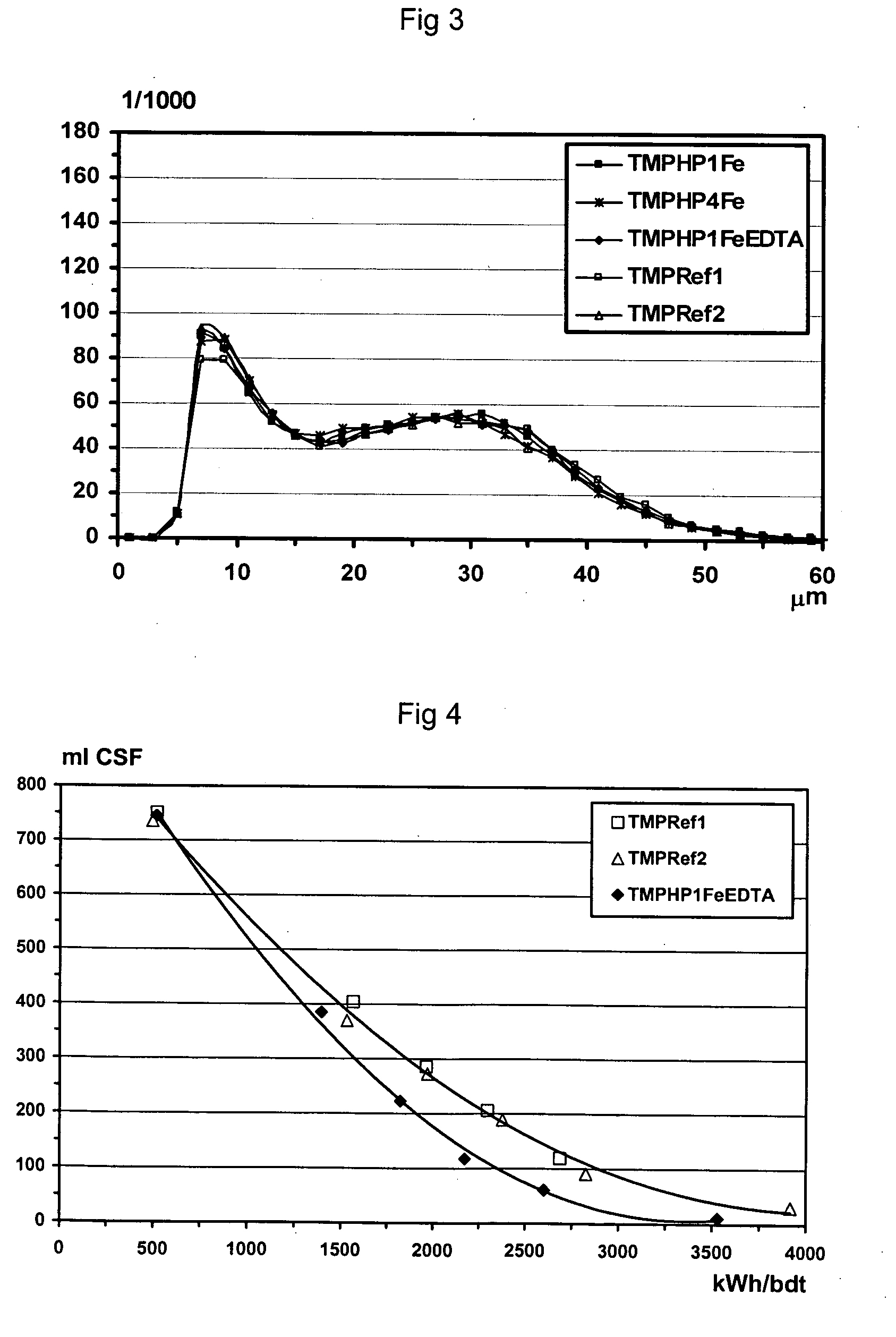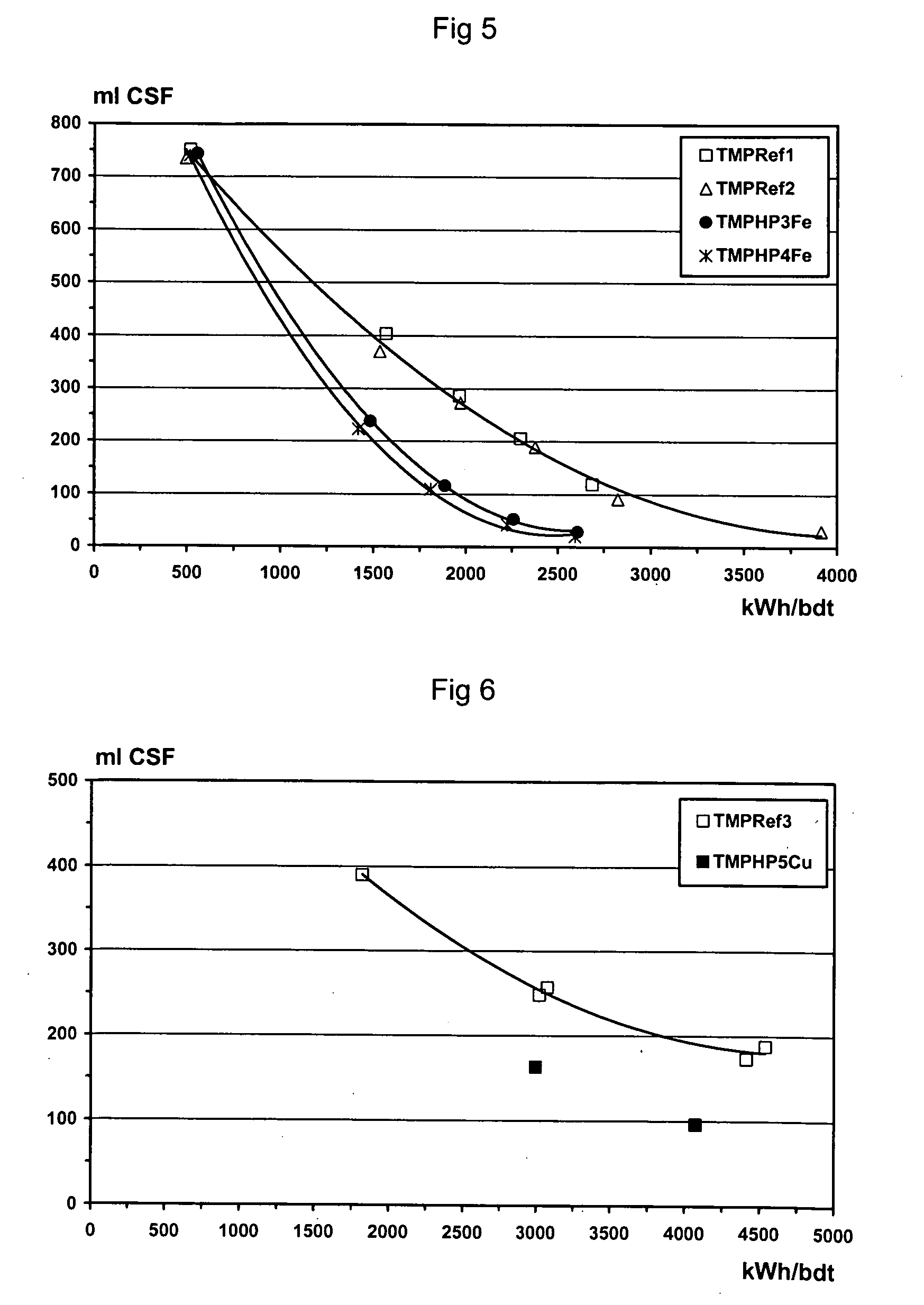Process of producing high-yield pulp
a high-yield pulp and pulp technology, applied in the field of high-yield pulp production, can solve the problems of limited interest in conventional products in the process of reducing the energy consumption of mechanical pulp during the production of mechanical pulp, high energy consumption that represents about 20% of the energy demand of papermaking in the world, and the preservation of pulp yield and pulp properties. , to achieve the effect of sufficient energy saving and maintaining pulp yield
- Summary
- Abstract
- Description
- Claims
- Application Information
AI Technical Summary
Benefits of technology
Problems solved by technology
Method used
Image
Examples
example 2
[0045] Black spruce (Picea mariana) thermomechanical pulp (TMP) was debarked, chipped, preheated, and refined according to the procedure described in Example 1 above.
[0046] A TMP reference (denoted TMPRef1) was produced without addition of chemicals in the same manner as was described in Example 1.
[0047] A reference TMP produced under more acidic conditions (denoted TMPRef2) was produced by adding 0.19 wt % sulphuric acid (H2SO4) based on the weight of bone dry wood to the refiner eye (inlet) of the primary refiner in the same manner as was described in Example 1.
[0048] A TMP produced according to the present invention using acid hydrogen peroxide (H2O2) was produced by mixing 0.12 wt % Na4EDTA based on the weight of bone dry wood and 0.08 wt % iron sulfate (FeSO4×7 H2O) based on the weight of bone dry wood and then adding the mixture to the refiner eye of the primary refiner. Hydrogen peroxide (H2O2, 1.1 wt % based on the weight of bone dry wood) was added to the blow line of th...
example 3
[0053] Black spruce (Picea mariana) thermomechanical pulp (TMP) was debarked, chipped, preheated, and refined according to the procedure described in Example 1.
[0054] A reference TMP (denoted TMPRef1) was produced without addition of chemicals in the same manner as described in Example 1.
[0055] A TMP reference produced under more acidic conditions (denoted TMPRef2) was produced by adding 0.19 wt % (of bone dry wood) sulphuric acid (H2SO4) to the refiner eye (inlet) of the primary refiner in the same manner as described in Example 1.
[0056] A TMP produced according to the present invention using acid hydrogen peroxide (H2O2) was produced by adding 0.08 wt % iron sulfate (FeSO4×7 H2O) based on the weight of bone dry wood to the refiner eye of the primary refiner and 2.2 wt % hydrogen peroxide (H2O2) based on the weight of bone dry wood to the blow line of the primary refiner. The pH of the resulting pulp was 3.3. The pulp is denoted TMPHP3Fe in FIG. 5 and Tables 5-6.
[0057] A TMP pr...
example 4
[0062] Norway spruce (Picea abies) wood was used for the production of thermomechanical pulp (TMP). The wood logs were debarked and chipped and washed prior to preheating and refining operations. A 20 inch pressurized refiner (model OVP-MEC run at 1500 rpm) was used to produce a high-freeness pulp (about 540 ml CSF). The energy input in the refiner was about 1150 kWh / bone dry metric ton (bdmt). The activator and oxidant were then added to the defibrated pulp in a mixer (Electrolux BM 10S) immediately before further refining in a Wing refiner. The activator was first added to the pulp followed by the addition of the oxidant. The mixing time was 30 seconds for both activator and oxidant. The reference pulp (TMPRef3) was treated in the same way with the exception that deionized water was added to the mixer to give the same pulp consistency as for the pulp treated according to the invention. This was done since it is well known that the pulp consistency influences the resulting pulp pro...
PUM
| Property | Measurement | Unit |
|---|---|---|
| Volume | aaaaa | aaaaa |
| Volume | aaaaa | aaaaa |
| Volume | aaaaa | aaaaa |
Abstract
Description
Claims
Application Information
 Login to View More
Login to View More - R&D
- Intellectual Property
- Life Sciences
- Materials
- Tech Scout
- Unparalleled Data Quality
- Higher Quality Content
- 60% Fewer Hallucinations
Browse by: Latest US Patents, China's latest patents, Technical Efficacy Thesaurus, Application Domain, Technology Topic, Popular Technical Reports.
© 2025 PatSnap. All rights reserved.Legal|Privacy policy|Modern Slavery Act Transparency Statement|Sitemap|About US| Contact US: help@patsnap.com



